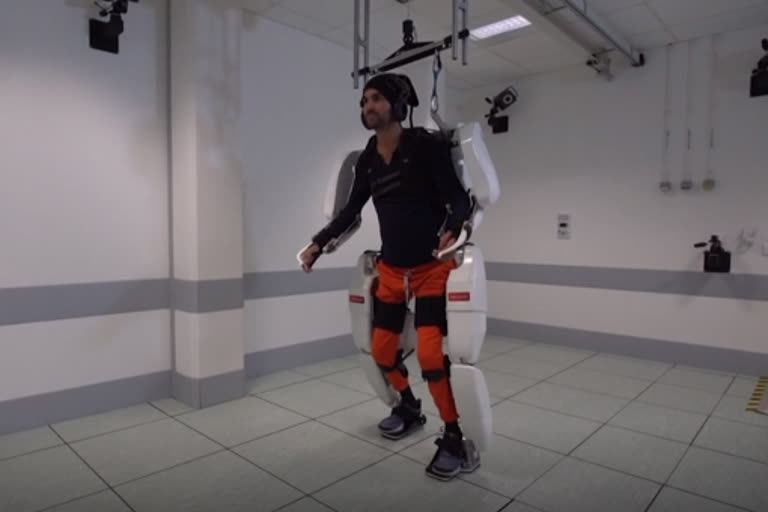Hyderabad: Its not the tech, its the brain which allows you to look beyond the horizons and to make the impossible possible. In an experiment in France, scientists had discovered that a man paralysed from the shoulders down has been able to walk using his brain to operate a robotic skeleton.
Although its a long way from being a solution for disabled people.
A 28-year-old man who was paralysed attached to a rope holding him stable, but it's his brain which is propelling him forward.
The exoskeleton is like a support system created by the French company Clinatec at the CEA laboratory. It provides physical support to physically disabled people.
It is not something new but scientists are still working hard on perfecting them. It is different from other robots as it operated by the patient's brain signals.
Two wireless sensors are implanted in the patient's brain which controls the movements. The sensors record electrical signals from the patient's brain and send commands to the exoskeleton.
According to the scientists at Clinatec, about twenty per cent of cervical spinal cord injuries result in people becoming tetraplegic. These are the most severe and devastating spinal cord injuries resulting in the paralysis of both arms and legs.
Each sensor has a grid of 64 electrodes which collect the brain signals. These are transmitted to a decoding algorithm. This system translates the brain signals into movements the patient thinks about and sends his commands to the exoskeleton.
It is not a complete solution, but they may have the potential to improve the quality of disabled people's lives.
Exoskeletons have come a long way, they have become more sophisticated as the world advances in the field of robotics.
The study was funded by many organisations including the French Alternative Energies and Atomic Energy Commission and it was carried out by researchers from CEA, Clinatec and the University of Grenoble among others.



